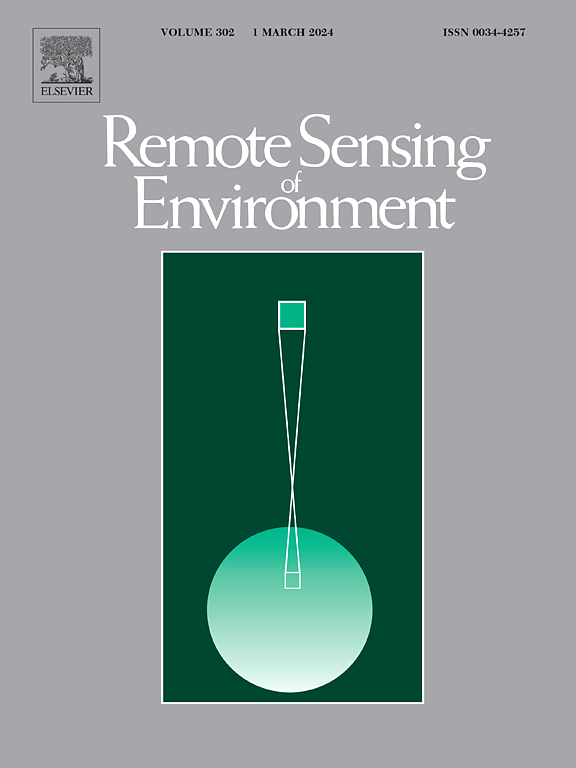A gradient-based 3D nonlinear spectral model for providing components optical properties of mixed pixels in shortwave urban images
IF 11.1
1区 地球科学
Q1 ENVIRONMENTAL SCIENCES
引用次数: 0
Abstract
Unmixing optical properties (OP) of land covers from coarse spatial resolution images is crucial for microclimate and energy balance studies. We propose the Unmixing Spectral method using Discrete Anisotropic Radiative Transfer (DART) model (US-DART), a novel approach for unmixing endmember OP in the shortwave domain from mono- or multispectral remotely sensed images. US-DART comprises four modules: pure pixel selection, linear spectral mixture analysis, gradient iterations, and spectral correlation. US-DART requires a surface reflectance image, a 3D mock-up with facets’ group information, and standard DART parameters (e.g., spatial resolution and skylight ratio) as inputs, producing an OP map for each scene element. The accuracy of US-DART is evaluated using two types of scenes (vegetation and urban) and images (Sentinel-2 surface reflectance and DART-simulated pseudo-satellite images). Results demonstrate a median relative error of approximately 0.1 % for pixel reflectance, with higher accuracy for opaque surfaces compared to translucent materials. Excluding co-registration errors and sensor noise, the median relative error of OP is typically around 1 % for opaque elements and 1–5 % for translucent elements with an accurate a priori “reflectance-transmittance” ratio. US-DART enhances our ability to derive detailed OP from coarse-resolution imagery, potentially enabling more accurate modeling of spatial resolution conversions, and energy dynamics, including albedo and shortwave radiation balance, across diverse environments.
求助全文
约1分钟内获得全文
求助全文
来源期刊

Remote Sensing of Environment
环境科学-成像科学与照相技术
CiteScore
25.10
自引率
8.90%
发文量
455
审稿时长
53 days
期刊介绍:
Remote Sensing of Environment (RSE) serves the Earth observation community by disseminating results on the theory, science, applications, and technology that contribute to advancing the field of remote sensing. With a thoroughly interdisciplinary approach, RSE encompasses terrestrial, oceanic, and atmospheric sensing.
The journal emphasizes biophysical and quantitative approaches to remote sensing at local to global scales, covering a diverse range of applications and techniques.
RSE serves as a vital platform for the exchange of knowledge and advancements in the dynamic field of remote sensing.
 求助内容:
求助内容: 应助结果提醒方式:
应助结果提醒方式:


